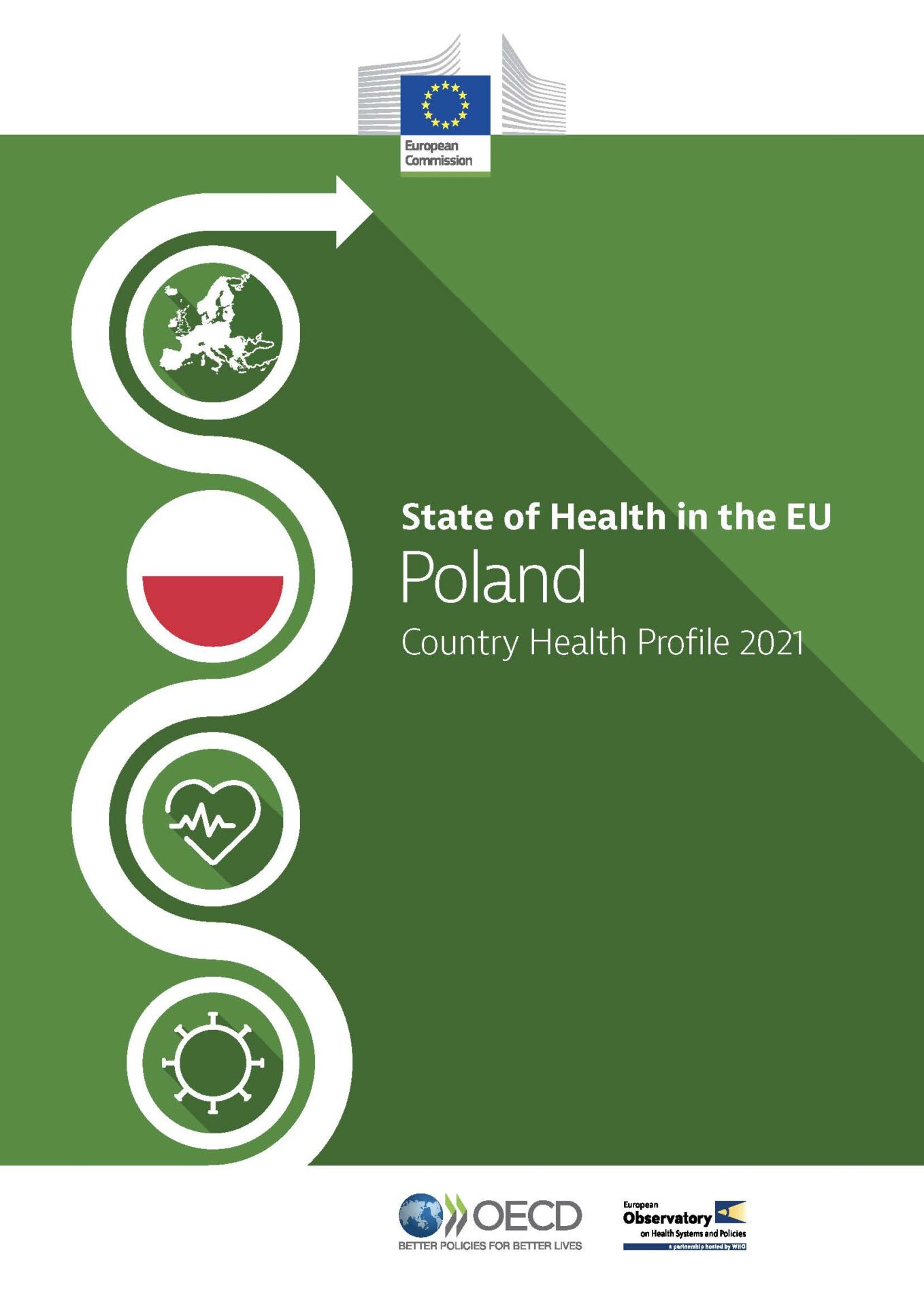In 2020, Poland temporarily lost 1.4 years of life expectancy compared to 2019 because of deaths due to the Covid-19 pandemic. The Polish health system has been suffering from low levels of public financing for many years; this is reflected in workforce shortages and access problems such as long waiting times and high out-of-pocket payments.
While the Covid-19 pandemic stimulated unprecedented use of teleconsultations in primary care, non-Covid-19 patients faced barriers to accessing specialist care. Workforce shortages were brought into focus as the key bottleneck in surging care capacity during the pandemic.
Poland’s health status
Life expectancy in Poland in 2020 was 76.6 years – four years lower than the EU average. High excess mortality due to the Covid-19 pandemic caused life expectancy to fall by 1.4 years between 2019 and 2020, which was among the largest reductions observed in the EU. Ischaemic heart disease, stroke and lung cancer were the main causes of death before the pandemic, but Covid-19 accounted for a substantial share of deaths in 2020.
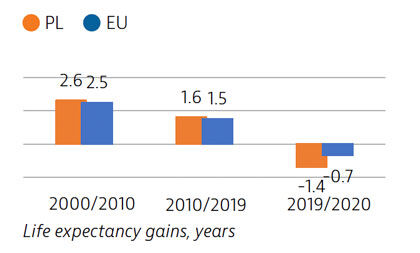
Risk factors
Almost half of all deaths in Poland are driven by behavioural factors, such as smoking, binge drinking and physical inactivity. Obesity has been growing and almost a fifth of adults are now obese – a higher share than in the EU. While alcohol consumption among adults has been rising, smoking rates among both adults and adolescents have been decreasing. Nevertheless, the growing popularity of e-cigarettes among young people is a concern.

Poland’s health system
Over the past decade, spending on health in Poland has remained consistently below the EU average, both in per capita terms and as a share of GDP. The Covid-19 pandemic prompted additional funding injections in 2020 to support the health sector response. Around 72% of Poland’s health spending comes from public sources, but out-of-pocket spending is high, accounting for just over 20% of current health expenditure – mostly for outpatient medicines.

Effectiveness
Mortality from both preventable and treatable causes in Poland is above the EU average. Efforts are being made to tackle obesity and there is also scope to strengthen tobacco and alcohol policies to improve population health. Cancer survival rates have improved but remain comparatively low.
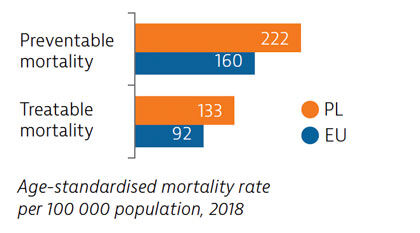
Accessibility
The level of unmet needs before 2020 was relatively high in Poland and this continued during the Covid-19 pandemic. The growing use of teleconsultations helped maintain access to primary care during the pandemic, but access to specialist care was severely restricted for non-Covid-19 patients.
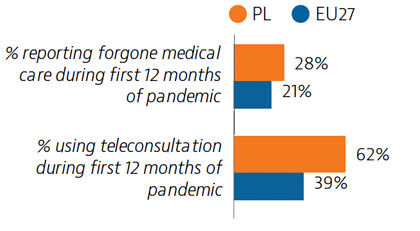
Resilience
Primary care progressively became the first line of Covid-19 response, but limited testing and contact tracing capacity have persisted. By the end of August 2021, half the population had received two doses (or equivalent) of a Covid-19 vaccine, but vaccine hesitancy is slowing the rollout of the vaccination programme.
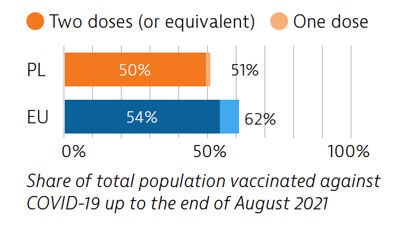
OECD/European Observatory on Health Systems and Policies (2021), Poland: Country Health Profile 2021, State of Health in the EU, OECD Publishing, Paris/European Observatory on Health Systems and Policies, Brussels.









